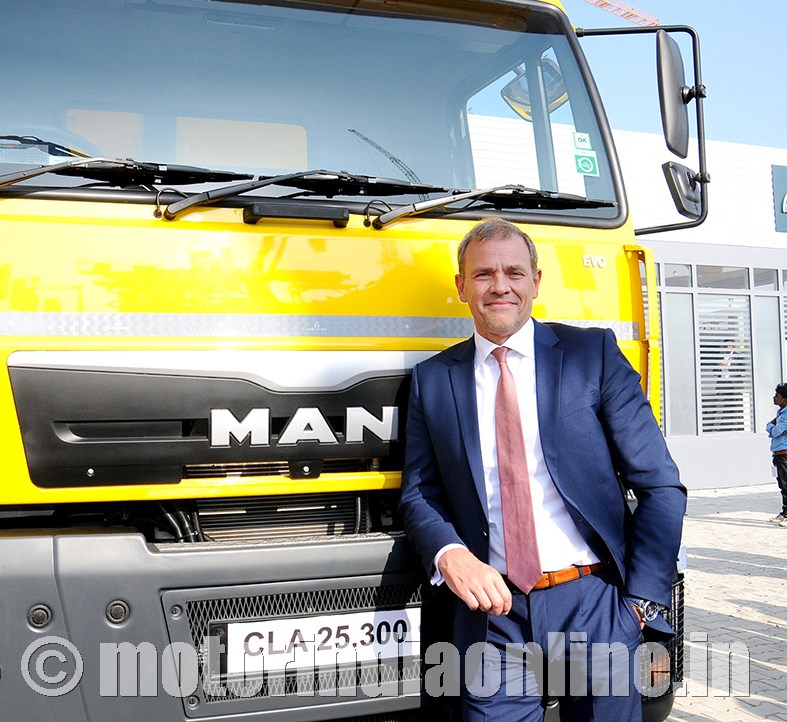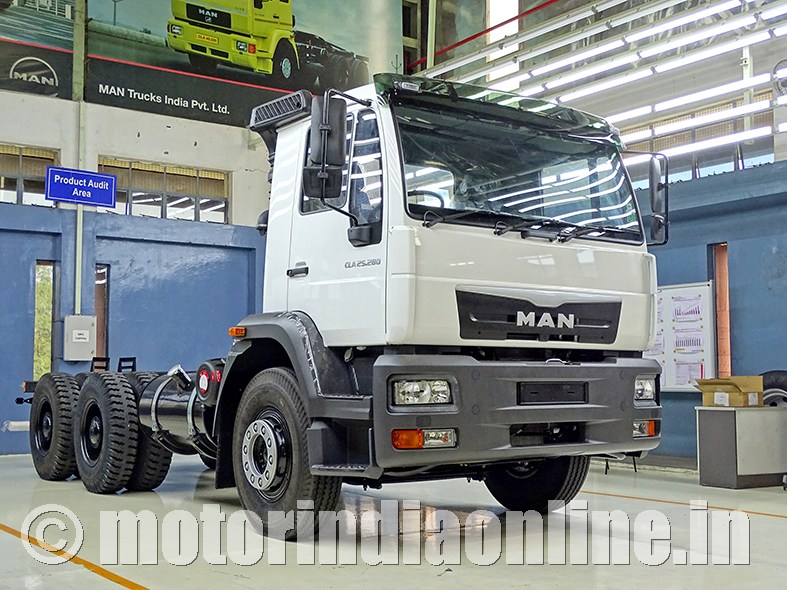Gears up for long-term by expanding market presence and stepping up service support
With the Indian CV industry in buoyant mood, things seem to be falling in place for the truck & bus makers in the country as the government maintains its push on infra development and economic growth. We spoke to Mr. Joerg Mommertz, Chairman and Managing Director, MAN Trucks India, on future industry trends & challenges, what the industry expects from the academia sector and lore more.

Excerpts:
What according to you think is the ‘next big thing’ in the Indian commercial vehicle or transportation sector that all stakeholders should keep an eye out for?
India is undergoing a major transformation all across; be it the service sector or the mobile industry or the way you book movies or even groceries, everything is changing. Trucking industry cannot remain where it was and trucks cannot be what India has seen in the last couple of decades.
Steps taken towards technological advances (engines conforming to higher emission standards, after treatment solutions, safety, telematics, as some examples) in the country marks a new age in the CV industry. This will be the ‘next big thing’ as the start of a new age in the transport sector.
However, it will take a considerable amount of time and cost for these technologies to be implemented as there are various elements to this. For the CV industry, it’s acquisition cost and cost-per-kilometre parametres that matter the most to customers.
MAN is working on various new initiatives to enhance the ownership experience of our customers going forward.
What kind of traits & skills do you think graduates and upcoming students should possess to be able to succeed in the industry?
Two things are most essential – 1) Have the required qualification with right attitude, and 2) the aptitude to learn and self-skilling at all times. Individuals who are innovative and forward-looking with familiarity of the CV industry are always viewed as an asset within any high-performing organization. Candidates who have a strong grasp of information technology, particularly technology that drives manufacturing in the automotive industry will have an upper hand in succeeding in the industry in the coming days.
Could you list out the major challenges that loom large in our country’s commercial transport sector?
For the Indian CV industry, the challenge is to meet the constantly evolving market demands by providing the right concepts and solutions to customers.
With development happening across the world in automobile industry, with latest technology making ways across the globe for commercial vehicles, we find many manufacturers in India trying to bring in new technology in their offerings. But in the current scenario the companies are finding limited acceptability as customers perceive these products ahead of time with limited infrastructure and facilities in the country to take advantage of new technologies. For example, haulage trucks can now carry heavier payloads than before. Through better roadways these vehicles, therefore, could deliver better performance that would impart greater profitability to the operators.
According to you, what are the top three trends that would shape the future of the industry?
The trend in the CV industry has been moving strongly towards providing better technology and value-added services in the products such as use of telematics, driver comfort, safety and other features. Utilizing the vehicle better has been the key criteria for going for a better technology. The sales for the higher tonnage vehicles have increased in the past few years which indicate that the requirement and availability of goods have gone up.
In the similar context we have recently announced Mobile24 initiative by MAN which is a 24×7 roadside assistance service, which will support for all MAN trucks & buses operating in the country, especially haulage vehicles.
We feel that in the next 2-3 years the industry will focus on utilizing the vehicles better and also on the network being stronger. Currently the transportation industry is largely unorganized with about 75% of CVs being owner-driven. But with enhanced technology and network there are strong chances that this turn to be organized in the near future.
Also, with new emission, safety and body building norms, trends like alternate fuel and electrification will gain momentum. As we go towards BS-VI, we strongly feel that the industry will evolve much more.
How do you think the Indian CV/transport industry will look like in the next 5 to 10 years’ time?
According to the research firm ICRA, the total market size for CV in India will remain at 7.5 lakh units in FY18. Medium and Heavy Commercial Vehicle (M&HCV) is expected to grow between 1-3 per cent, while the entire CV segment is expected to grow by 5-6 per cent in FY18. Similarly, the CV exports from India are likely to grow at a CAGR of 12-15 per cent over the medium-term to touch 160,000 units by 2020.
This will be driven by expansion in the new markets like Asia, Africa and the Middle East, scaling up exports from foreign CV OEMs and growing demands from existing markets like the SAARC region.
At MAN Trucks India, we have our plans to become more visible through greater sales opportunities. Our growth will move in tandem with changing market dynamics and evolving regulatory environment. The span of time can even exceed 10 years here. But MAN is here for the long-term.
